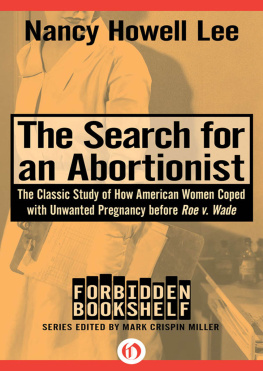PENGUIN BOOKS An imprint of Penguin Random House LLC 375 Hudson Street New York, New York 10014 penguin.com Copyright 2016 by Corinne Lee Greiner Penguin supports copyright. Copyright fuels creativity, encourages diverse voices, promotes free speech, and creates a vibrant culture. Thank you for buying an authorized edition of this book and for complying with copyright laws by not reproducing, scanning, or distributing any part of it in any form without permission. You are supporting writers and allowing Penguin to continue to publish books for every reader. Acknowledgments to the original publishers of portions of this work appear . Frontispiece: Photograph by Colin Doyle LIBRARY OF CONGRESS CATALOGING - IN - PUBLICATION DATA Names: Lee, Corinne, author.
Title: Plenty / Corinne Lee. Description: New York : Penguin Books, [2016] | Series: Penguin poets Identifiers: LCCN 2016012488 (print) | LCCN 2016018569 (ebook) | ISBN 9780143108177 (paperback) | ISBN 9781101991886 (ebook) Subjects: | BISAC: POETRY / American / General. Classification: LCC PS3612.E34255 A6 2016 (print) | LCC PS3612.E34255 (ebook) | DDC 811/.6dc23 Cover design: Lynn Buckley Cover art: Apollo and Daphne by Giovanni Battista (16961770) / Louvre, Dpartement des Peintures, Paris, France / Erich Lessing Version_1 for Marjorie Perloff, Toma alamun, Paul Slovak, and Dean Young with thanks When you look at the environmental data, the conclusion is inescapable: Were toast. T. C. B OYLE
ORIGINS
Plenty uses Americas relationship with wheat and glassmetaphorically speaking, sheaves of glassto explore the countrys generous gifts and excesses, entrances and exits.
Wheat and glass are a driving force behind the creation of sedentary, polluting civilizations (no need to move if there are abundant windows, limitless electronic screens, and a plentiful supply of synthesized but toxic bread). As seeds of the Anthropocene and global warming, wheat and glass are permanently bonded, wedded to each other and to us: sheaves of plenty, sheaves of glass.
I.
Neither glass nor wheat is native to North America. Glass trade beads were first introduced to Arizona and New Mexico by Francisco Vsquez de Coronado y Lujn in 1540. The first North American glass factory was established in Jamestown, Virginia, during 1608. In 1493 Christopher Columbus brought wheatan ancient annual grassto the New World.
Hernn Corts de Monroy y Pizarro carried wheat from Spain to Mexico by ship in 1519. Beginning in 1540, missionaries and conquistadors first took wheat from Mexico to what is now Arizona and California. However, wheat was first grown productively on an island just off the Massachusetts coast in 1602just six years before construction of the first glass factory in North America.
II.
Glass is a trinity: a mixture of sand (silica), limestone, and soda ash that is heated to an extremely high temperature (1,575 C/2,867 F) and then cooled. Glass furnaces also are tripartite: the first furnace, which contains a crucible filled with molten glass, is called simply the furnace; the second, which glassblowers use to reheat pieces while working, is called a glory hole; and the last, called the annealer or lehr, gradually cools the glass. Because it is sticky and viscous, glass only
seems solid; upon finally reaching room temperature in the annealer, glass behaves like a liquid but actually is an amorphous solid.
Glass furnaces are perpetual; they must operate 24/7 and cannot be shut down or even partially cooled during their entire fifteen- to eighteen-year life span. Modern glass factories use natural gas and fuel oil (a liquid petroleum product) for heat; both are potent contributors to global warming. The production of glass creates water pollution and releases huge quantities of carbon dioxide, sulfur dioxide, nitrogen oxides, and toxic dust into the atmosphere. Coating glass to create mirrors and other products results in an assortment of volatile organic compounds. Roughly 40 percent of glass is defectively manufactured and must be discarded. Glass is one of the primary components of household waste in America.
Although infinitely recyclable, glass is one of the most difficult and energy-intensive products to recycle. Americans recycle less than 25 percent of the glass they use. It is not possible to remove glass from the environment. In addition, after sand, limestone, and soda ash are melted together, the resulting glass cannot be returned to its separate origins as distinct components. Even when glass fragments into tiny grainsa process that takes one million years or moreits three original ingredients remain bound forever, a metaphorical and actual melted sheaf. Similarly, America cannot be separated from its conflicting rolesas enslaver and emancipator, warmonger and peacemaker, imprisoner and liberator, mass murderer and life giver, exterminator of tribes and advocate for the indigenous, manufacturer of toxic herbicides and preserver of forests, fossil fuel harvester and inventor of alternative energy sourcesor from the technologies that enable those roles.
Nor can the country be divorced from its rapacious appetites and capacious gifts.
III.
The high-yield dwarf varieties of wheatintroduced during the mid-twentieth century and now widely usedensure plentiful harvests but also have countless negative impacts, ranging from lost and weak topsoil to bakers who must wear masks because they become allergic to their own flour. Ancient varieties of wheat are annual grasses that have existed for millennia. Willowy and elegant, they grow tall, which causes them to topple when doused with herbicides and pesticides. Modern engineered dwarf varieties are shorter, sturdier, and able to remain upright after spraying. Agribusiness wheat crops are often sprayed with Monsantos Roundup, a powerful herbicide and desiccant, to kill weeds and facilitate early harvest by prematurely drying grain.
The active ingredient in Roundup is a chemical called glyphosate. Weeds and other plants are evolving to resist glyphosate, becoming plentiful superweeds, such as giant ragweed, that eradicate native flora and fauna. Monsanto has genetically engineered Roundup Ready seeds such as corn, soy, canola, alfalfa, sorghum, and wheatthese plants resist glyphosate and similar herbicides, remaining alive even when native grasses and other plants around them perish after a spraying. Roundup Ready seeds are nicknamed Terminator Seeds because the crops they produce are sterile, so farmers cannot save their best seeds for the next season and are forced to buy seeds from Monsanto on an essentially infinite basis. Monsantos profits double because farmers must buy both Roundup and Roundup Ready seeds. In some areas of North America, the majority of farmers now have extreme difficulty growing seeds that are not genetically engineered.
In response to widespread opposition, Monsanto withdrew its Roundup Ready wheat from production in 2004. Regardless, almost a decade later, rogue volunteer Roundup Ready wheat was found growing in an Oregon field. Despite its promise to end Roundup Ready production, Monsanto has resumed testing Roundup Ready wheat at fields in North Dakota and Hawaii. Roundups glyphosate residue has been discovered in the tissues and urine of human beings as well as wild and domesticated animalsand in drinking water. It not only causes morphological abnormalities in amphibians, but also dramatically decreases the biodiversity of aquatic communities. In addition to killing plants, glyphosate destroys bacteria and damages the integrity of soil.




















